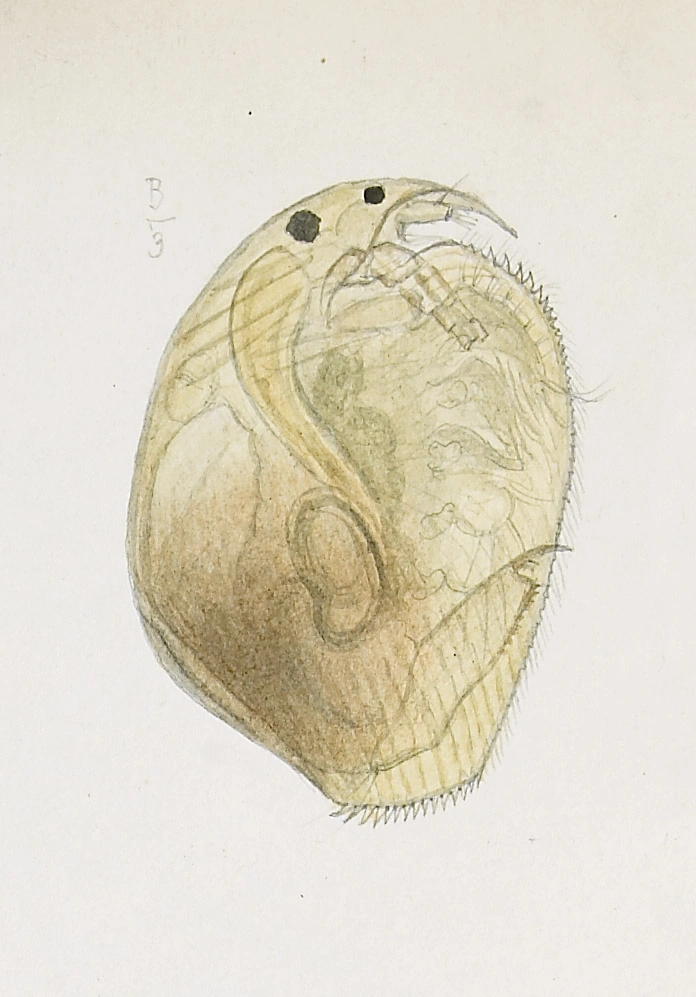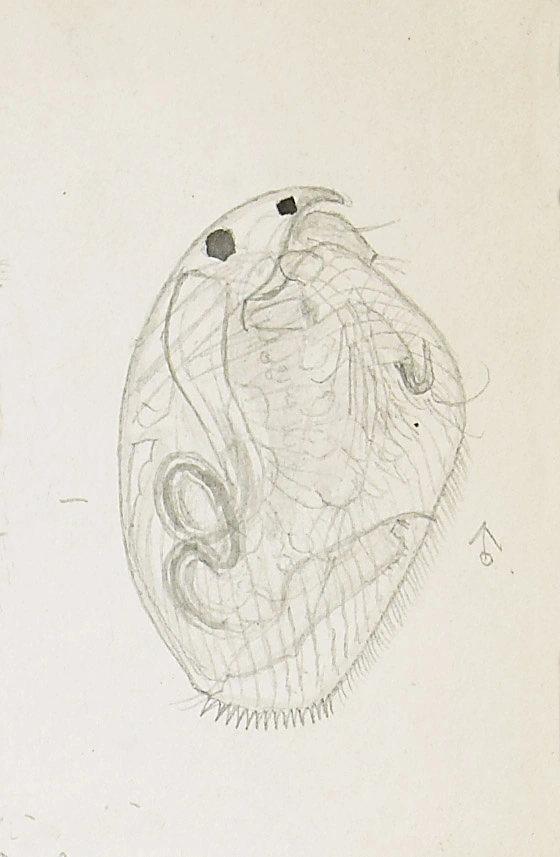Pleuroxus truncatus
Pleuroxus truncatus is easy to distinguish from all chydorids because the posterior margin of the carapace has 12–21 coarse teeth. It is common and may occur in relatively high numbers.
Key characteristics
Pleuroxus truncatus (female)
Pleuroxus truncatus (male)
Pleuroxus truncatus is also known as Peracantha truncata. It is easy to distinguish from all chydorids because the posterior margin of the carapace has 12–21 coarse teeth. The post abdomen has 11–20 spinules increasing in size distally, where the lateral spinules have groups of small setae. Its colour varies from light brown to red brownish.
Female: Length 0.5–0.8 mm
Male: Length 0.4–0.5 mm
Ecology and distribution
P. truncatus is a quite common littoral species found in 23 % of the investigated water bodies. It occurs regularly in the southeastern parts of Norway, while it has a more scattered distribution in the rest of the country. Its highest frequency is found in localities situated between 100 and 300 m a.s.l., though it occurs from sea level and up to the alpine zone (1268 m a.s.l.). It is recorded in water bodies of all sizes, often in high densities. It occurs in all sorts of vegetation, and is also found on stony/sandy bottom. The frequency of lakes containing P. truncatus increase slightly with pH, which varies between 4.2 and 8.6, while conductivity varies from 0.7 to 53 mS/m.
| Vitenskapelig navn | < 4,5 | 4,5 - 4,9 | 5,0 - 5,4 | 5,5 - 5,9 | 6,0 - 6,4 | 6,5 - 7,0 | 7,0 - 7,4 | > 7,5 |
|---|---|---|---|---|---|---|---|---|
| 11 | 15,9 | 19,9 | 32,1 | 30,2 | 23,2 | 29,6 | 33,3 |
| Vitenskapelig navn | < 1,0 | 1,0 - 1,4 | 1,5 - 1,9 | 2,0 - 2,9 | 3,0 - 3,9 | 4,0 - 4,9 | 5,0 - 6,9 | 7,0 - 9,9 | > 10,0 |
|---|---|---|---|---|---|---|---|---|---|
| 5,1 | 10,9 | 19,2 | 22,7 | 24,4 | 27,2 | 35,9 | 33,3 | 40,1 |
| Vitenskapelig navn | < 0,01 | 0,01 - 0,09 | 0,1 - 0,9 | 1,0 - 9,9 | 10,0 - 99 | 100 - 999 | > 1000 |
|---|---|---|---|---|---|---|---|
| 29,4 | 21,4 | 17,3 | 23,9 | 19,9 | 27 | 37 |
| Vitenskapelig navn | < 100 | 100-299 | 300-499 | 500-699 | 700-999 | >1000 |
|---|---|---|---|---|---|---|
| 18,6 | 40,4 | 20,5 | 12,3 | 14,9 | 2,5 |

